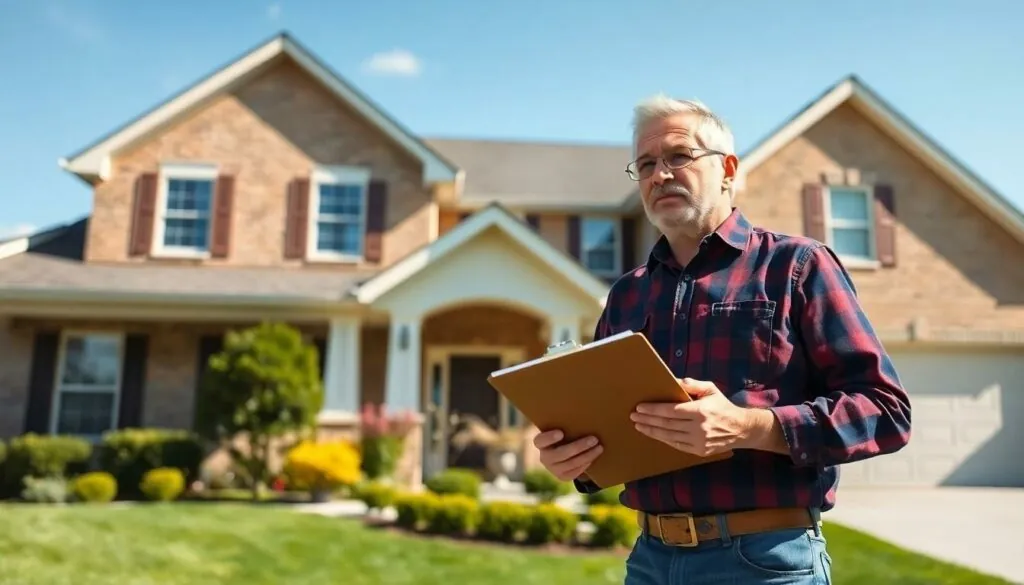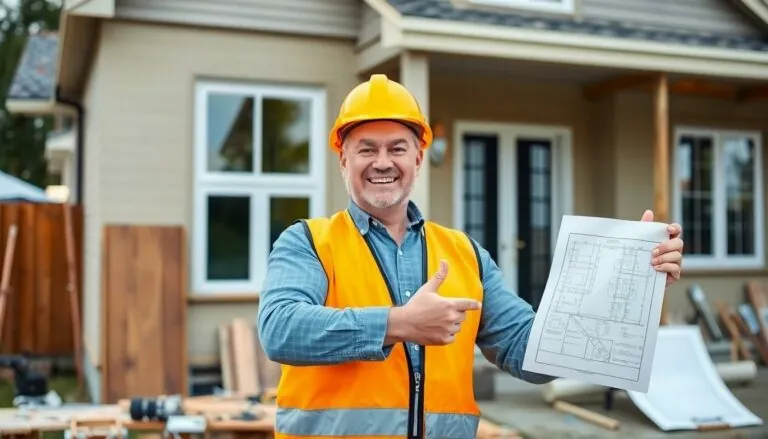Table of Contents
ToggleWhen it comes to home sweet home, protecting that cozy haven is a top priority. After all, who wants to deal with the chaos of unexpected mishaps? Home buildings insurance isn’t just a safety net; it’s your trusty shield against the unpredictable world outside. Think of it as a superhero cape for your house—minus the spandex.
Imagine waking up to a leaky roof or a surprise guest in the form of a tree crashing through your living room. With the right coverage, those nightmares become mere inconveniences. Home buildings insurance ensures that when life throws a curveball, homeowners can bounce back without breaking a sweat—or the bank. So let’s dive into the ins and outs of this essential coverage and discover how it can keep your home—and your sanity—intact.
What Is Home Buildings Insurance?
Home buildings insurance protects homeowners against damage to their property. This type of insurance covers costs associated with repairs and rebuilding after unforeseen events.
Definition and Purpose
Home buildings insurance primarily safeguards the structural integrity of a home. It provides financial assistance for damages caused by events such as fire, storms, or vandalism. This coverage not only protects the dwelling but also helps maintain the owner’s investment. Policies can cover additional structures on the property, like garages and sheds, enhancing the overall safety net for homeowners. Knowing that financial support exists during emergencies fosters peace of mind.
Coverage Types
Several coverage types exist under home buildings insurance. Dwelling coverage accounts for damage to the home’s structure itself. Other structures coverage extends protection to separate buildings on the property. Personal property coverage might include items inside the home, such as appliances or furniture, but typically falls under a different policy. Loss of use coverage helps with living expenses if a home becomes uninhabitable due to a covered event. Each type of coverage plays a vital role in ensuring a comprehensive protection plan for homeowners.
Importance of Home Buildings Insurance

Home buildings insurance offers essential protection for homeowners against various risks. It provides financial assistance during unexpected situations that could impact the home’s structural integrity.
Financial Protection
Financial security stems from robust home buildings insurance. Coverage generally includes protection against damages from disasters such as fire and storms. Homeowners can face significant repair costs without this safety net. Insurance ensures that they can restore their property without straining their finances. Statistics indicate that 60% of homeowners experience damages requiring financial assistance, revealing the necessity of this insurance type. With proper coverage, individuals safeguard their investments against loss and minimize economic impact.
Peace of Mind
Peace of mind arises from having reliable home buildings insurance. Knowing that coverage exists alleviates anxiety about potential damages. Homeowners feel secure, understanding that they are prepared to handle unforeseen events. An estimated 75% of homeowners express increased comfort when insured, emphasizing the emotional benefits of this safety measure. This assurance bolsters confidence in their ability to protect their property. Moreover, effective coverage supports a proactive approach to homeownership, promoting a sense of stability and well-being.
How to Choose the Right Home Buildings Insurance
Choosing the right home buildings insurance involves careful consideration of several key factors.
Assessing Your Needs
Identifying specific needs forms the foundation for selecting an appropriate insurance policy. Homeowners should evaluate the total replacement cost of their property, which varies depending on location and construction materials. Reviewing personal belongings also provides insight into necessary coverage amounts. Analyzing any unique features of the home, such as additions or high-value items, can offer additional context for coverage needs. Understanding local risks, including natural disasters or crime rates, influences coverage decisions as well. This thorough assessment ensures homeowners receive suitable protection tailored to their circumstances.
Comparing Policies
Comparing policies is essential to finding the best coverage options. Start by reviewing coverage limits and deductibles for various providers. It’s crucial to analyze the different types of coverage included, ensuring each policy addresses specific needs outlined earlier. Exclusions can vary significantly, so scrutinizing them keeps homeowners informed about potential gaps in coverage. Investigating customer service ratings helps gauge how insurers handle claims and customer inquiries. Additionally, considering premiums alongside available discounts can enhance affordability while maintaining essential coverage. This comprehensive comparison aids homeowners in making informed decisions about their insurance policies.
Common Exclusions in Home Buildings Insurance
Home buildings insurance doesn’t cover everything. Understanding common exclusions helps homeowners avoid surprises during claims.
Natural Disasters
Natural disasters often lead to significant property damage, but some incidents are typically excluded from coverage. Floods pose a major risk, making flood insurance essential for affected areas. Earthquakes also fall outside standard policies and necessitate separate coverage options. Additionally, damage from landslides isn’t included. Homeowners in regions prone to these hazards must prioritize extra policies to shield their investments effectively. It’s crucial to closely examine the geographical risks before selecting insurance.
Maintenance Issues
Maintenance issues frequently create gaps in home buildings insurance coverage. Regular wear and tear isn’t covered, as insurance protects against unforeseen events, not ongoing degradation. Homeowners find that neglecting property upkeep can lead to denied claims. Infestations, like termites or pests, also fall outside standard coverage policies. Providing proper maintenance safeguards properties and avoids issues with claims. Taking preventative measures remains essential for ensuring long-term protection and the preservation of property value.
Tips for Lowering Home Buildings Insurance Costs
Lowering home buildings insurance costs involves a few strategic steps. Implementing effective measures can significantly reduce premiums while maintaining adequate coverage.
Bundling Policies
Bundling insurance policies offers substantial savings. Combining home buildings insurance with auto or life insurance frequently results in discounts. Many insurance providers reward customers for consolidating their policies, which lowers overall costs. Additionally, bundled policies simplify management by allowing homeowners to handle all their insurance needs through one provider. Streamlining communication and billing enhances convenience. Homeowners should evaluate different providers to ensure they receive the best bundle deal.
Increasing Deductibles
Increasing deductibles effectively decreases insurance premiums. A higher deductible means homeowners pay more out-of-pocket during a claim, leading to lower monthly costs. Homeowners can assess their financial stability to determine a comfortable deductible amount. Choosing a deductible between $1,000 and $2,500 often results in noticeable savings. Homeowners should balance potential out-of-pocket expenses against premium reductions while remaining aware of their financial situation. This strategic increase allows homeowners to maintain solid coverage even at reduced costs.
Home buildings insurance is an essential investment for homeowners seeking to protect their property and finances. With the right coverage in place, they can face unexpected events with confidence and peace of mind. Understanding the various types of coverage and assessing individual needs allows homeowners to tailor their policies effectively.
By prioritizing comprehensive protection and exploring ways to lower insurance costs, homeowners can safeguard their investments while maintaining financial stability. Ultimately, having reliable home buildings insurance fosters a sense of security and well-being, making homeownership a more rewarding experience.




